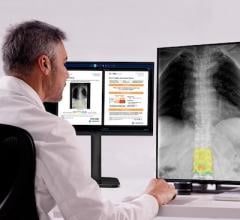
Large-scale mergers and acquisitions are causing increased strain on IT teams responsible for consolidating and managing infrastructure across an organization. When coupled with AI integrations, cloud migration, and other technological advancements, the already immense pressure on IT infrastructure is being exacerbated to new levels.
Healthcare IT leaders need to obtain insights into historical clinical workflow patterns which allow them to understand how end-user behavior and workflow patterns must change to improve the efficiency of the organization and the delivery of care. These IT leaders have the following comprehensive needs:
1. Monitoring and analytics solutions that can track system performance realized by the end user.
2. Software monitoring tools that provide insights about the performance of the overall system architecture that is required to support a specific clinical software platform.
3. Knowledgeable human resources and time to manage and monitor an analytics software package.
4. Integration of hardware event monitoring with application usage monitoring.
5. A mechanism to understand the quality of the data, to ensure variations in data quality do not adversely affect the decision-making process.
Resultant Functional Gaps
Unfortunately, monitoring tools designed for specific clinical applications such as imaging IT typically do not have sight lines to collect data from software and hardware infrastructure IT systems. Conversely, the purview of many enterprise IT monitoring solutions excludes the underlying processes within the clinical IT applications.
This results in gaps that reduce the ability to gather IT infrastructure, technical application, and workflow statistics from across the enterprise, limiting IT’s ability to pinpoint the root cause of a workflow problem, and increasing the likelihood of alert fatigue resulting from excessive email and text notifications generated by various systems.
The Role of Artificial Intelligence (AI)
AI provides opportunities to take enterprise and clinical systems monitoring to the next level by enabling predictive and behavioral intelligence. This can enable analytics to learn from the infrastructure, applications, end-user workflows to understand how trends are changing, and identify variances against historical patterns and identify their sources. For example:
1. AI can learn what a monitored value should be under a specific set of circumstances and can watch for emerging data changes that might indicate an impending problem, or opportunity for workflow optimization. This allows clinical and IT teams to proactively identify root causes and resolve issues before they impact end users.
2. AI can control what actions to take when a KPI is achieved by throttling the urgency and frequency of alerts. AI can perform additional analysis about the root cause of an initial alert event and only alert the end user once there is a broader understanding of the root cause.
Value of Analytics as a Managed Service
Typically, analytics and monitoring dashboards are touted as “self-service.” Realistically, though, dedicated, knowledgeable resources who understand the needs and challenges of the business are usually required for managing such tools.
Leveraging enterprise analytics and monitoring as a managed service creates many new opportunities to understand and act upon the data being presented across the healthcare organization. It enables the full force of the service providers’ analytics experts to leverage their experience with the software and the processes necessary to unlock greater understanding. The benefits of this new approach can include:
1. Fully understanding the information presented in the analytics, including the predictive analytics.
2. Gain deeper insights into potential future degradations of services that could affect end-user performance.
3. Understand root causes and more readily resolve problems that may span multiple software vendors.
4. Easily engage in the detailed conversations necessary to understand root causes and make long term improvements.
5. Eliminate the risk of a site spinning their wheels and not understanding the root cause of a problem.
6. Facilitate reassignment of internal resources that have historically spent time troubleshooting problems.
Examples of Analytics-as-a-Managed-Service in Action
Advocate Aurora Health: “The Strings services enabled us to engage in the detailed conversations that were necessary to understand root causes and make long term improvements.” — Timothy J. Heniadis Director – Enterprise Imaging, Imaging Services, Health Informatics and Technology, Advocate Aurora Health
Sentara Healthcare: “Improving our ability to understand and troubleshoot problems enabled Sentara IT to improve end-user productivity and overall department efficiency. Our ability to understand root causes and eliminate them contributed even further to this goal.” — Trent Conwell - Director of IT over Imaging Services, Sentara Healthcare
Learn More
To learn more about how the combination of predictive analytics and applications monitoring, combined with deep industry expertise, can reduce or eliminate Enterprise Imaging infrastructure challenges and optimize clinical workflow across the continuum of care, read the full white paper: https://bit.ly/3wtSG5V


 December 24, 2025
December 24, 2025 









